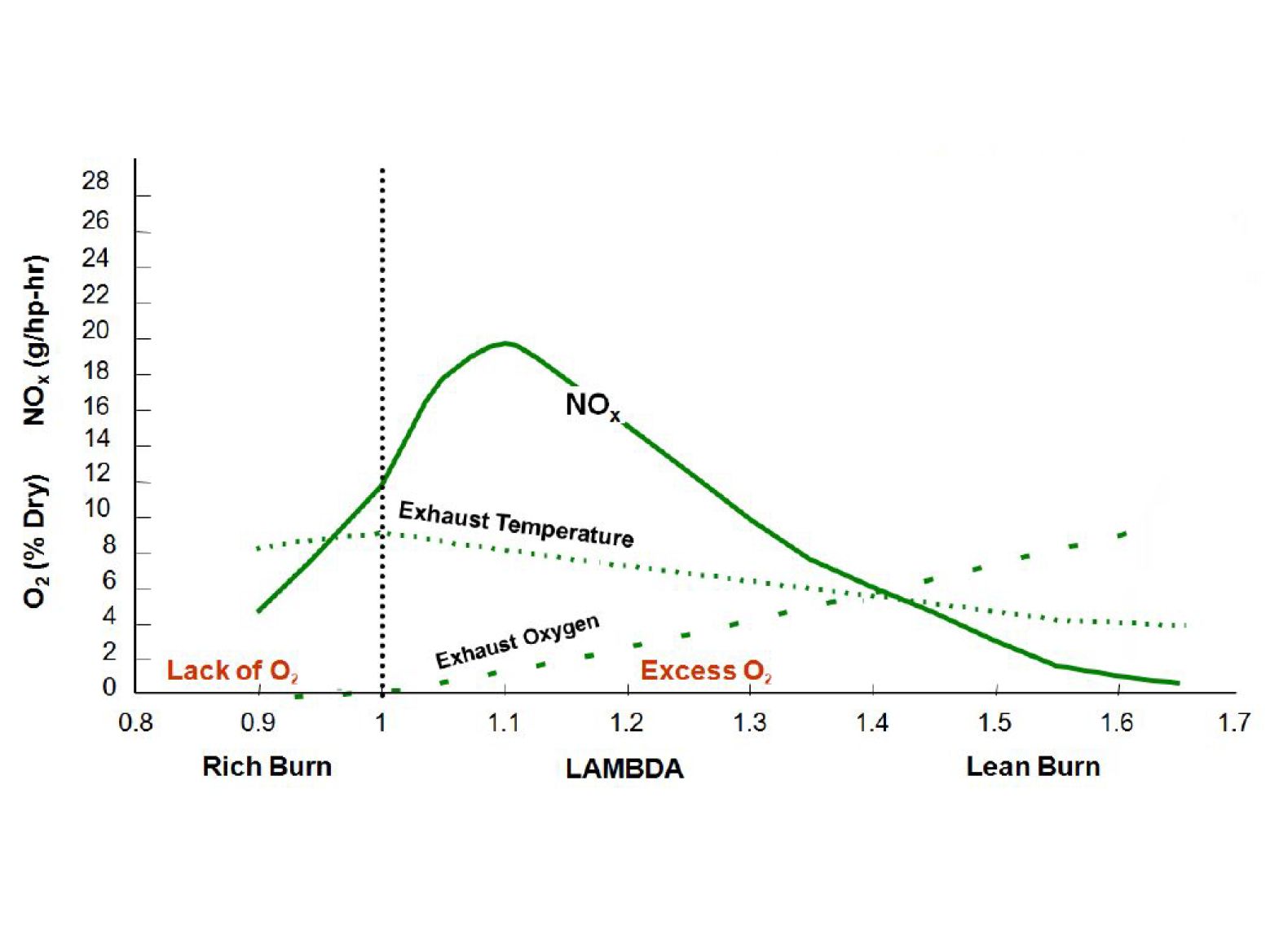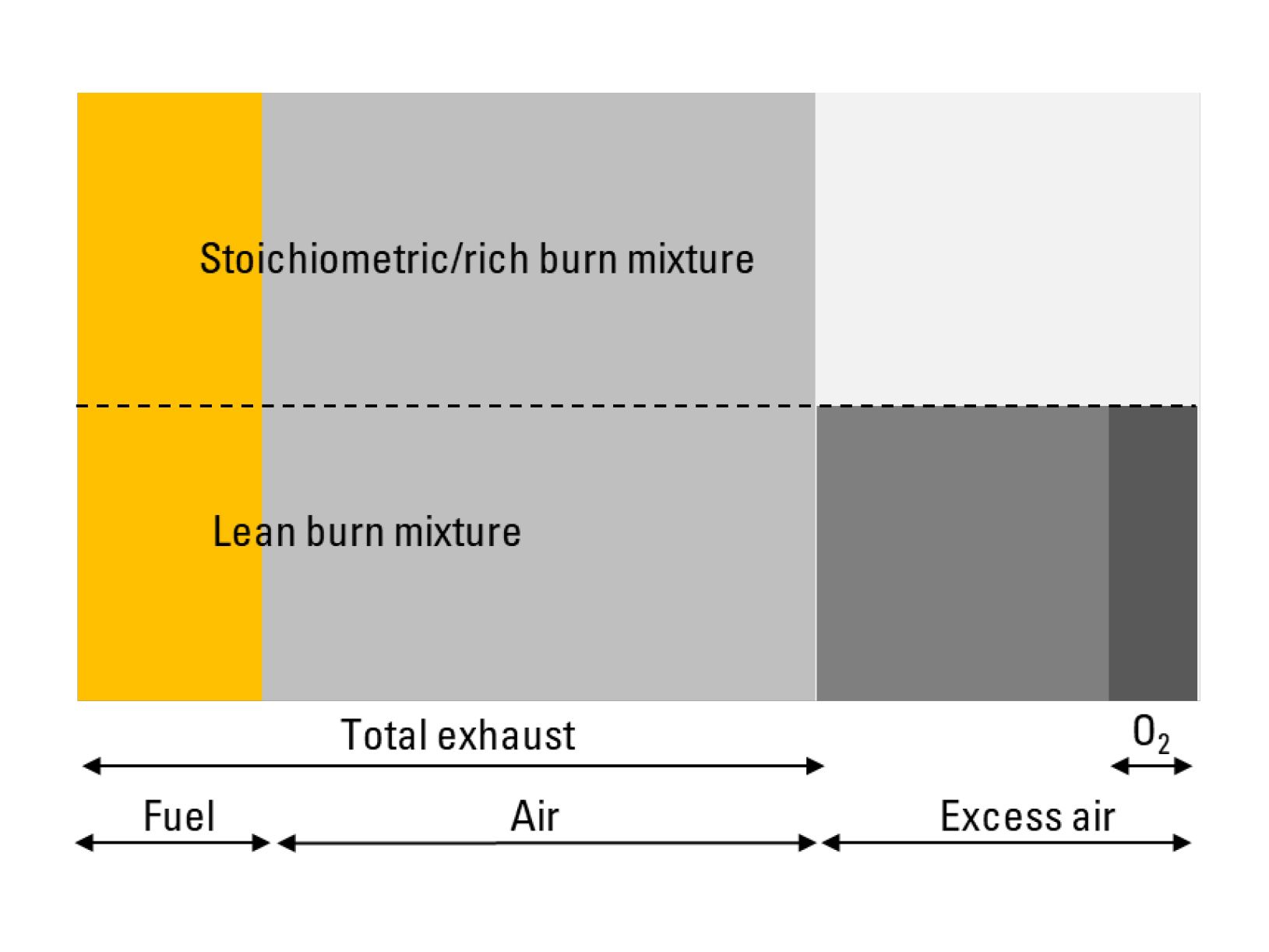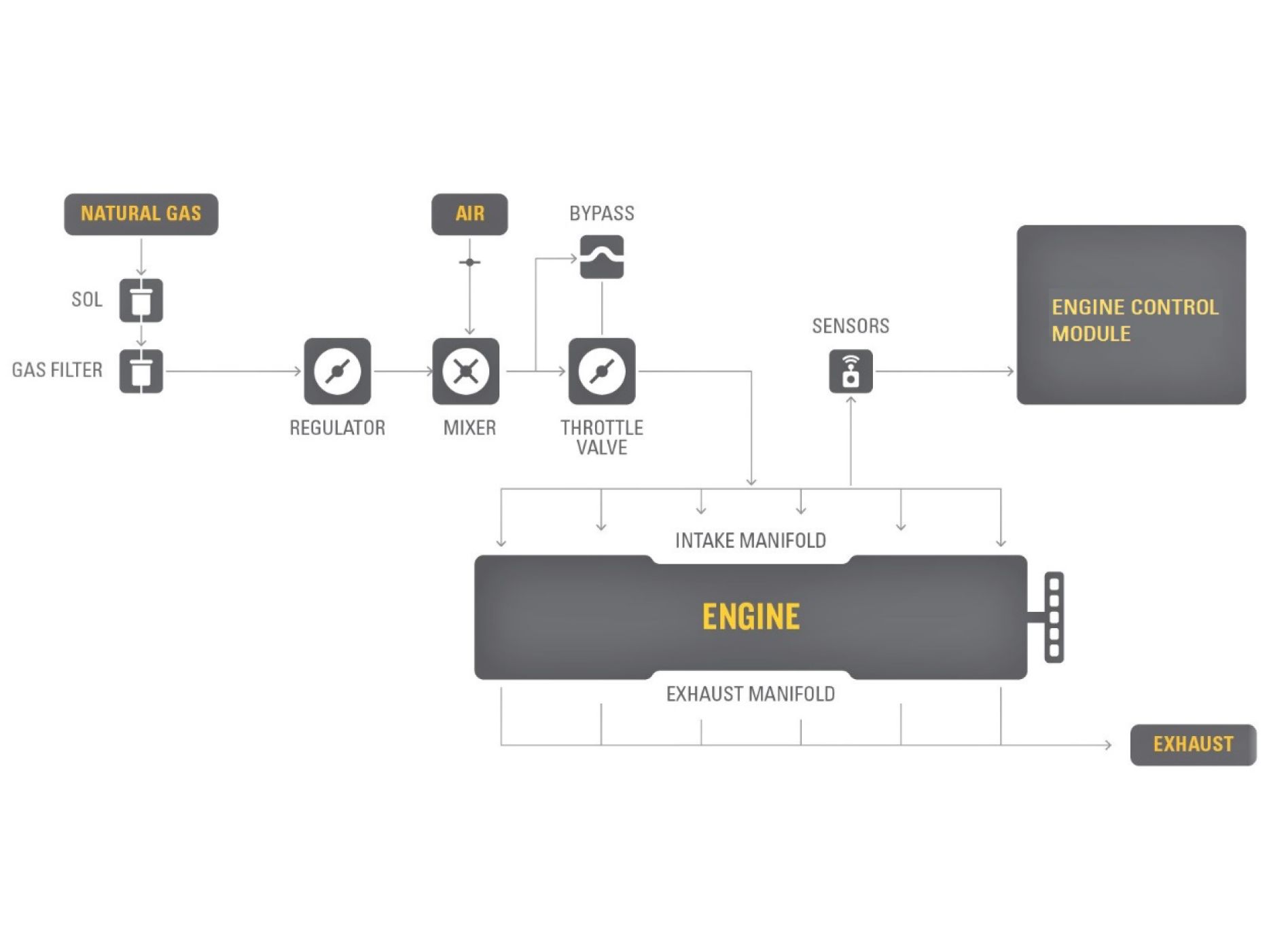

Sign In
Welcome! Sign In to personalize your Cat.com experience
If you already have an existing account with another Cat App, you can use the same account to sign in here
Register Now
One Account. All of Cat.
Your Caterpillar account is the single account you use to log in to select services and applications we offer. Shop for parts and machines online, manage your fleet, go mobile, and more.
Account Information
Site Settings
Security
Lean Burn Gas Generator Sets
Abstract
The use of lean burn natural gas engines over the years has been well proven to meet the ever-growing demand of important criteria, such as fuel efficiency, emissions performance, air regulations, reliability, durability and power density, of any reciprocating engine used in electric power generation.
Introduction
With the ever-developing world of reciprocating gas engines, never has there been a time more progressive than today that we see technologically advanced, fuel-efficient and economical gas engines. One such combustion technology that has often been successful across several electric power generation applications is the use of lean burn technology in gas engines. Lean burn gas engines can operate at higher loads, offer lower emissions, clean and consistent electricity and better efficiency and be more efficient overall.
LEVEL SETTING: LEAN BURN & RICH BURN
Lean burn gas engines are characterized by lower fuel consumption and lower emissions than rich burn engines operating at a balanced stoichiometric ratio (air-fuel ratio or Lambda is unity). The higher efficiency of lean burn engines is primarily due to their ability to achieve a higher power for a given displacement. Comparing two similar sized rich burn and lean burn engines producing similar power at similar efficiencies, the temperatures produced by a rich burn engine don’t make achieving the power density of lean burn practical. A rich burn engine is characterized by excess fuel in the combustion chamber during combustion (oxygen in exhaust typically ranges from 0.5%-0.6%), while a lean burn engine is characterized by excess air in the combustion chamber (oxygen in exhaust is typically >6%).
Characteristics of lean burn and rich burn
Lean Burn
- Lower exhaust temperature
- Lower exhaust NOx and CO emissions
- Higher power density
- Better fuel efficiency
Rich Burn
- Higher exhaust temperatures
- Higher NOx emissions (due to higher exhaust temperatures)
- More complete fuel consumption
- Lower power density



Lean burn engines use less fuel for a given amount of air—usually up to twice the amount needed for complete fuel combustion—making them more cost effective in terms of fuel consumption and releasing fewer greenhouse gases. Air dilution effectively cools down peak combustion temperatures in the cylinder, reducing NOx production and allowing lower engine-out emissions without the need for an aftertreatment system in many applications. This lean combustion process has the additional advantage of reducing the knock (detonation) probability, allowing for higher brake mean effective pressure (BMEP) levels (loads) and optimized combustion. This results in higher power density and usually produces better fuel efficiency.
The lean burn concept is an impressive technology used to design a low-emissions natural gas engine. Using an efficient air-gas management system—in addition to sophisticated engine technology—helps lean burn gas engines meet government-initiated emissions regulations. This air-gas management system not only helps with controlling emissions levels but also the resources and costs of an expensive aftertreatment typical to a rich burn system, which uses a three-way oxidation catalyst to reduce NOx produced due to higher cylinder temperatures, not to mention the demands of generating continuous, affordable and dependable electrical power.
Controlling the engine with modern microprocessor-based technologies—like the Electronic Control Modules (ECM) managing the microprocessor-based throttle and the air-fuel ratio control pushing pre-mixed air and gas into the engine cylinders and ignition, providing constant feedback to the ECM by NOx, temperature and pressure sensors—makes the lean burn engine gas management system more reliable than ever. With air-gas mixer systems, standby and demand response applications with lean burn engines can achieve 100% block loads while meeting NFPA requirements.
Geographical approach and Sustainability
Over the years, the demand for electrical power produced by gas engines has grown at a stable pace due to strict emissions laws and ever-growing utility power costs. Regions susceptible to hurricanes, water and wastewater applications and projects on the coastline leading to the risk of diesel contamination have made the use of gas engines even more relevant and the desired choice for several contractors and engineers.
With a relentless focus on maintaining the lowest emissions and considering global weather conditions, lean burn engines used for producing electrical power can be considered a timely solution to more stringent environmental regulations in the new era united collectively with lower fuel consumption and CO2 emissions.


